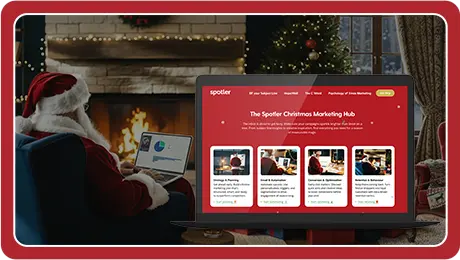Christmas Marketing Hub
At sign (@)
Finding the humble at sign (@) in a marketing glossary might seem odd, but it earns its spot. For most people, @ is a symbol used in everyday email addresses or social media mentions.
Let’s start with the basics. The at sign originated in accounting and commerce, meaning “at the rate of.” Fast-forward to today, and it’s become a universal symbol of communication, connection, and context: three things that sit at the heart of modern marketing.
In email marketing, you see @ all the time. Every address needs it, of course, but they can also be used as personalisation tokens. For example, when setting up an email campaign, you might use dynamic fields like “Hi @FirstName,” where @FirstName is a placeholder that gets swapped out with real data for each recipient. So in this world, @ has become a trigger for segmentation and personalisation.
Then there’s social media. On platforms like Twitter (now X), Instagram, and LinkedIn, the at sign is used to tag or mention someone’s handle, flagging them in a post. Want to shout out a partner company or respond to a customer question? Use the @. Not only does it keep the conversation public and trackable, but it also makes sure the tagged party gets notified. This kind of interaction is part of a brand’s voice online, and it plays a subtle but strategic role in community management and customer engagement.
Behind the scenes, the at sign has a technical life too. Marketing systems and CRMs often use @ as part of internal identifiers or custom field logic. In some data structures, it can indicate a field tied to a specific source, user attribute, or trigger. If you’ve ever worked with a marketing automation platform and seen something like @user.email or @lead.score, that’s the software’s way of pulling in dynamic data.
Keep expanding your knowledge
The Great British Split Test 2025
Does an all-caps subject line grab attention? Where should you put your CTA for max impact? See what Spotler tested on their own audience.
“Breakup emails”: how to re-engage your coldest subscribers
Every marketer has a segment they avoid looking at too closely: the cold list.
Love at first click: Pre and Post Valentine’s campaigns that deliver real revenue
With the right pre and post Valentine’s campaigns, you can lift revenue, strengthen your data and turn one off shoppers into loyal customers. Join us to find out how!
Events without the Hassle: All the Data, None of the Chaos
Get more out of the events you’re already running. Combine efficiency with a professional experience for your attendees and stop leads slipping through the cracks and follow up with ease.
Become the Brand AI Recommends First. Understanding Citation Authority for 2026
One of the biggest emerging opportunities is citation analysis and citation building for AI platforms. Find out how you can get AI to cite your brand via GEO.
Galentine’s Day: the fastest growing seasonal trend marketers should pay attention to
Galentine’s Day has grown from a small cultural moment into one of February’s most commercially interesting trends.
B2B Valentine’s ideas: campaigns that will not make tour audience cringe
Heart emojis and pink colour palettes are less likely to move your business customers. But there are other ways to make use of Valentine’s Day.
How to use personalisation without making it creepy this Valentine’s Day
Buyers want the personal touch, but they don’t want you too close. How do you get the balance right this Valentines Day?
Love, loyalty and LTV: turning Valentine’s shoppers into year-round customers
How do you turn your Valentine’s shoppers from spring fling to long-term relationship?
7 ways to make emails more interactive in 2026
Inboxes are more competitive than ever; it is estimated that 376.4 billion emails were sent every day in 2025.

